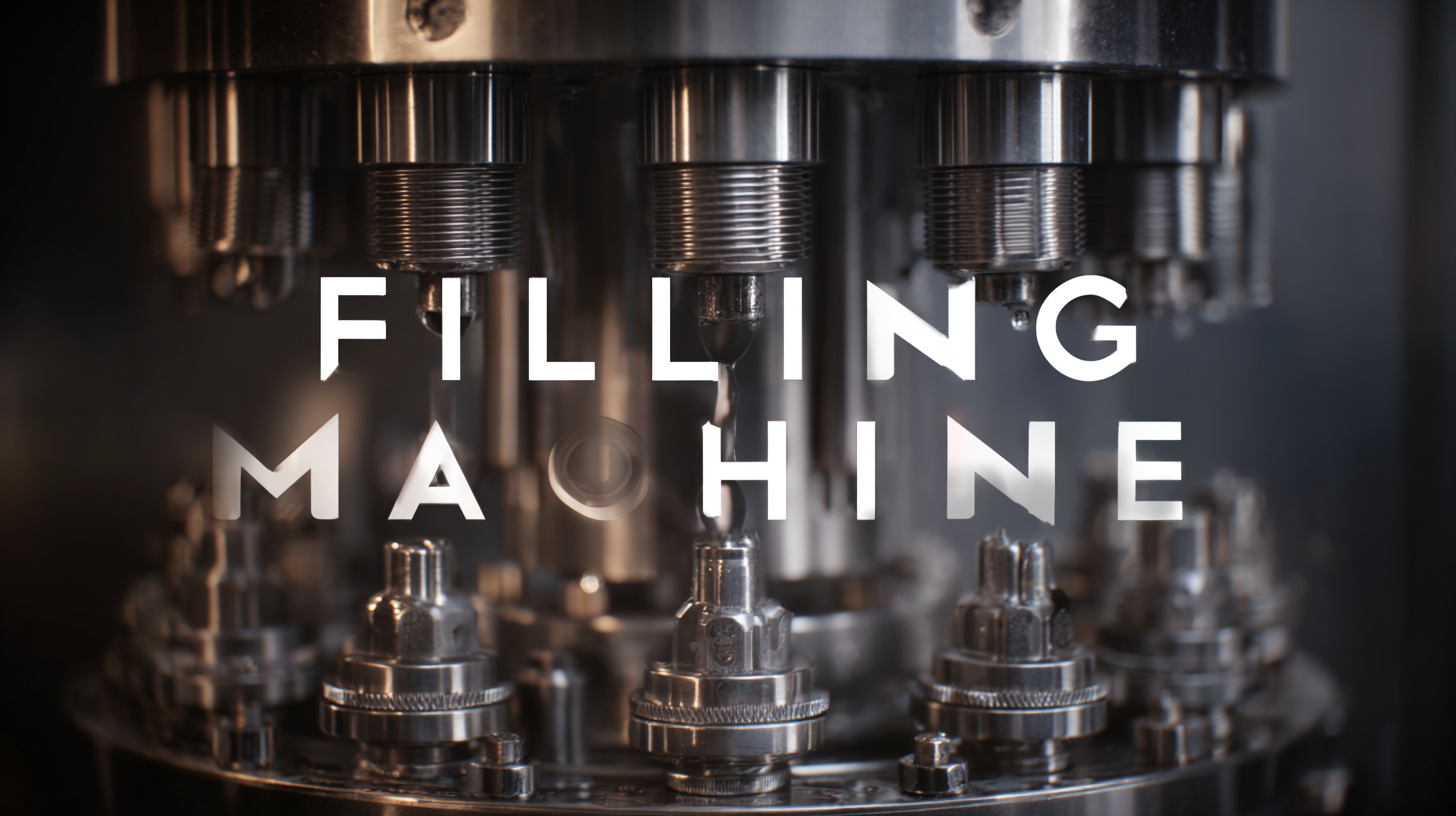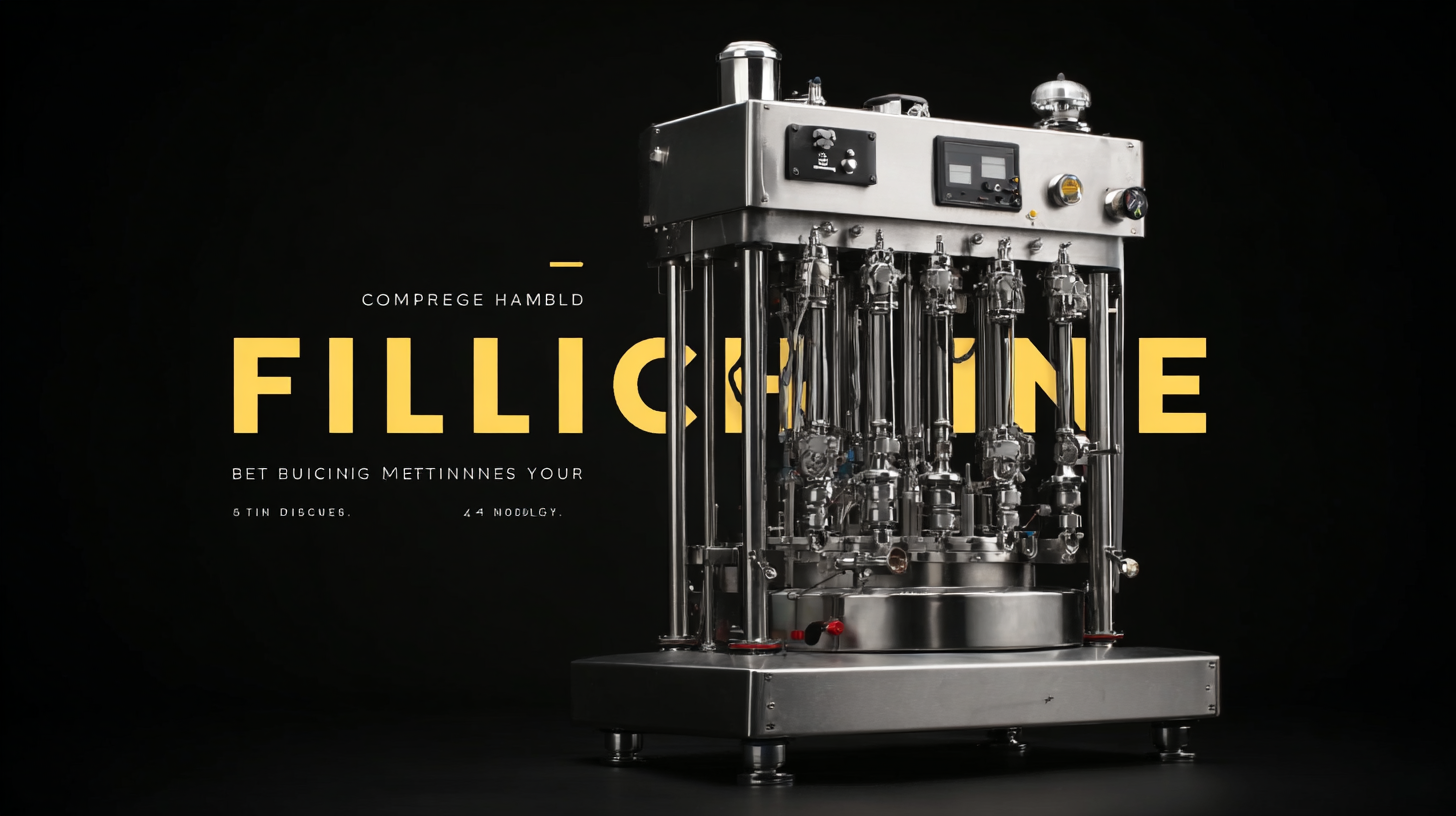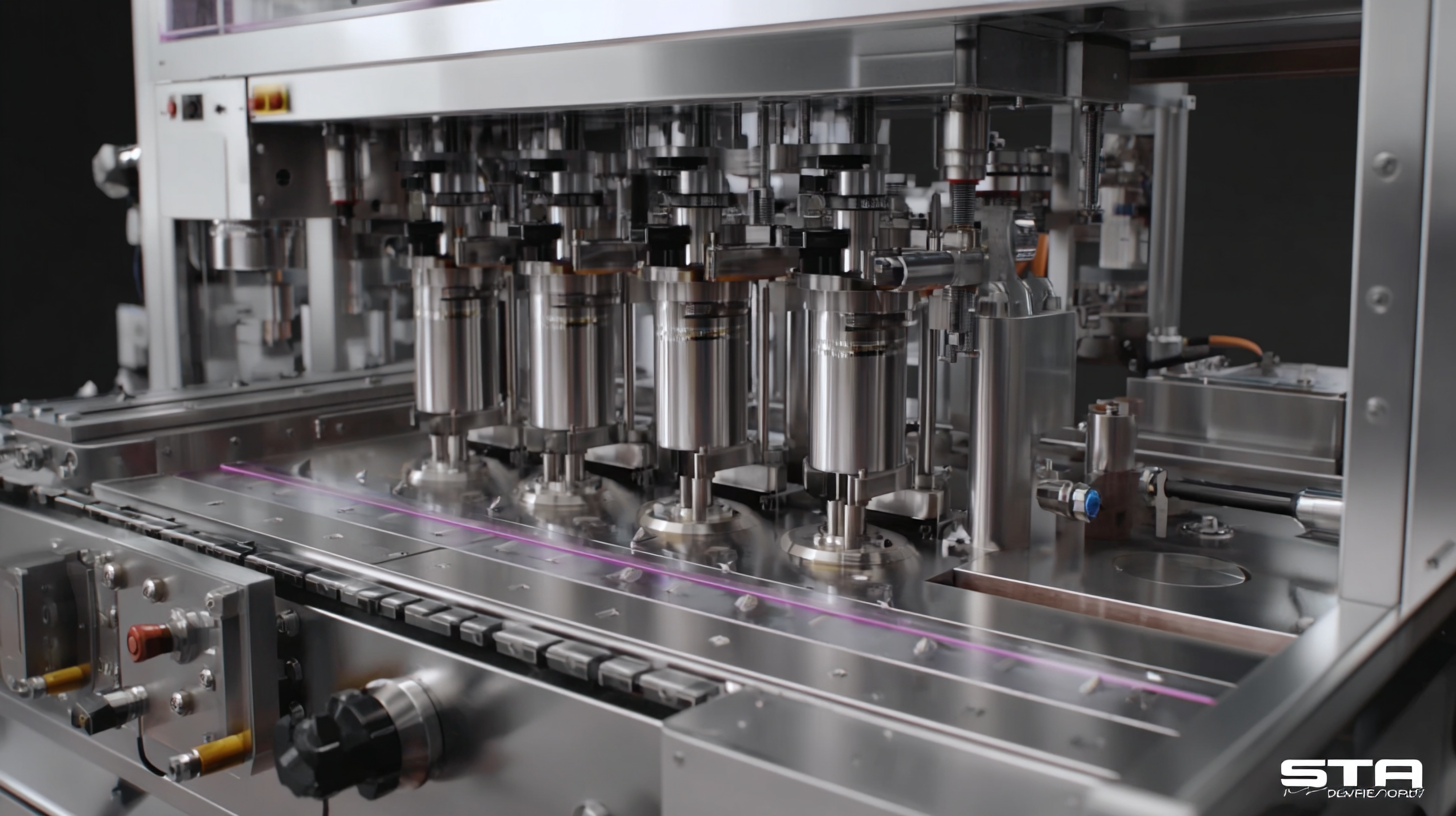The Comprehensive Handbook to Choosing the Best Filling Machine for Your Business Needs
In today's competitive landscape, selecting the right filling machine is crucial for businesses aiming to enhance productivity and maintain high-quality standards. According to a report by Grand View Research, the global liquid filling machine market is projected to reach USD 7.33 billion by 2025, driven by increasing demand in industries such as food and beverage, pharmaceuticals, and cosmetics. As the industry evolves, it becomes imperative for manufacturers to navigate various production standards and address common challenges associated with filling machines, such as accuracy, speed, and compatibility with diverse products. Understanding these industry standards and potential problems can guide businesses in making informed decisions when investing in filling solutions tailored to their unique operational needs.

How to Identify Your Business's Specific Filling Requirements for Optimal Efficiency
Identifying your business's specific filling requirements is crucial for achieving optimal efficiency in production. According to a report by MarketsandMarkets, the global filling machinery market is projected to reach $5.6 billion by 2025, reflecting the growing demand for customized solutions across various industries. When determining the right filling machine, consider factors such as product viscosity, container type, and production speed. For instance, a high-viscosity product, such as sauces or gels, may require a different filling technology compared to thin liquids like water or juice.
Tip: Conduct a thorough analysis of your product characteristics and production volume. A machine that handles multiple products and sizes can offer flexibility, allowing you to adapt to market changes with ease.
Furthermore, understanding your specific filling environments, such as sanitary requirements for food or pharmaceutical products, is essential. The latest industry trends show that machines with enhanced automation features not only improve precision but also reduce downtime, which can lead to increased overall productivity.
Tip: Investing in advanced filling machines can significantly lower operational costs over time, enhancing both efficiency and product quality. Assessing your current and future needs will help you make an informed decision that aligns with your business goals.
Top Features to Look for in a High-Quality Filling Machine
When selecting the best filling machine for your business, it's essential to prioritize certain features that ensure efficiency and quality. A high-quality filling machine should offer precision in filling volumes, ensuring that each product is consistent and meets regulatory standards. Additionally, look for machines that provide versatility, allowing you to handle various types of liquids or products without the need for multiple machines. This adaptability can significantly enhance your production line's efficiency.
Another crucial element to consider is user-friendliness. A machine with an intuitive interface reduces training time for employees and minimizes operational errors. Moreover, durability and ease of maintenance are key factors; investing in a filling machine that is built to last can save your business significant costs in repair and downtime. As the global market for offset printing machines is expected to grow steadily, understanding these core features will empower businesses to make informed decisions that align with their production goals and future growth.
Comparative Analysis of Manual, Semi-Automatic, and Fully Automatic Filling Machines
When it comes to selecting the right filling machine for your business, understanding the differences between manual, semi-automatic, and fully automatic systems is crucial. Manual filling machines are typically the most cost-effective option, perfect for small businesses or those just starting out. They require human intervention for each filling process, which can be time-consuming but allows for greater control, especially when dealing with varying product viscosities or small batch sizes.

On the other hand, semi-automatic filling machines strike a balance between efficiency and control. These systems automate part of the filling process while still requiring some manual input. This means you can achieve faster fill rates than with manual machines, which can help scale production without losing the personalized touch that might be necessary for certain products.
For larger operations, fully automatic filling machines offer the highest throughput and efficiency. They require minimal human interaction, as they can handle everything from filling to capping and labeling in one seamless process. While they come with a higher initial investment, the long-term benefits in productivity, consistency, and labor costs often make them a worthwhile choice for businesses looking to expand their production capabilities. Evaluating your production needs and budget will help determine the best filling machine for your business.
Evaluating Reliability and Customer Support from Filling Machine Manufacturers
 When selecting a filling machine for your business, evaluating the reliability and customer support of manufacturers is crucial. According to a 2021 report by MarketsandMarkets, the global packaging machinery market is expected to grow from USD 40.9 billion in 2020 to USD 57.4 billion by 2025, indicating an increasing demand for efficient and dependable filling machines. A key factor in this growth is the emphasis on manufacturers providing robust customer support and maintenance services to ensure operational continuity.
When selecting a filling machine for your business, evaluating the reliability and customer support of manufacturers is crucial. According to a 2021 report by MarketsandMarkets, the global packaging machinery market is expected to grow from USD 40.9 billion in 2020 to USD 57.4 billion by 2025, indicating an increasing demand for efficient and dependable filling machines. A key factor in this growth is the emphasis on manufacturers providing robust customer support and maintenance services to ensure operational continuity.
Tip: Before making a purchase, consider reaching out to existing customers of the manufacturer to gauge their experiences with reliability and support. Companies that prioritize after-sales support often build long-term relationships with their clients, as reflected in a 2020 survey which reported that 80% of businesses value responsive customer service as a top metric for satisfaction in equipment longevity.
Additionally, dive into the manufacturer's reputation in terms of warranty and service agreements. Research shows that companies offering extended warranties and service contracts tend to invest more in product reliability. This not only protects your investment but also ensures that any operational hiccups can be addressed swiftly, minimizing downtime and maximizing productivity.
Cost Considerations: Balancing Initial Investment with Long-Term Value
When selecting a filling machine for your business, cost considerations play a pivotal role in balancing the initial investment with long-term value. According to a report by MarketsandMarkets, the filling machine market is projected to grow from USD 5.7 billion in 2020 to USD 8.3 billion by 2025, reflecting an annual growth rate of 7.3%. This increase indicates that businesses recognize the importance of investing in quality machinery to enhance efficiency and productivity.
Initial costs can vary significantly, with basic systems starting at a few thousand dollars while advanced machines can exceed USD 100,000. However, it’s crucial to evaluate these expenses in conjunction with potential savings over time. A reliable filling machine can reduce labor costs, minimize product wastage, and increase production speed. For instance, a study published by PMMI revealed that automated filling machines can boost operational efficiency by up to 30%, giving a substantial return on investment in just a few years. Thus, while the initial outlay is considerable, the long-term benefits often outweigh the costs.
